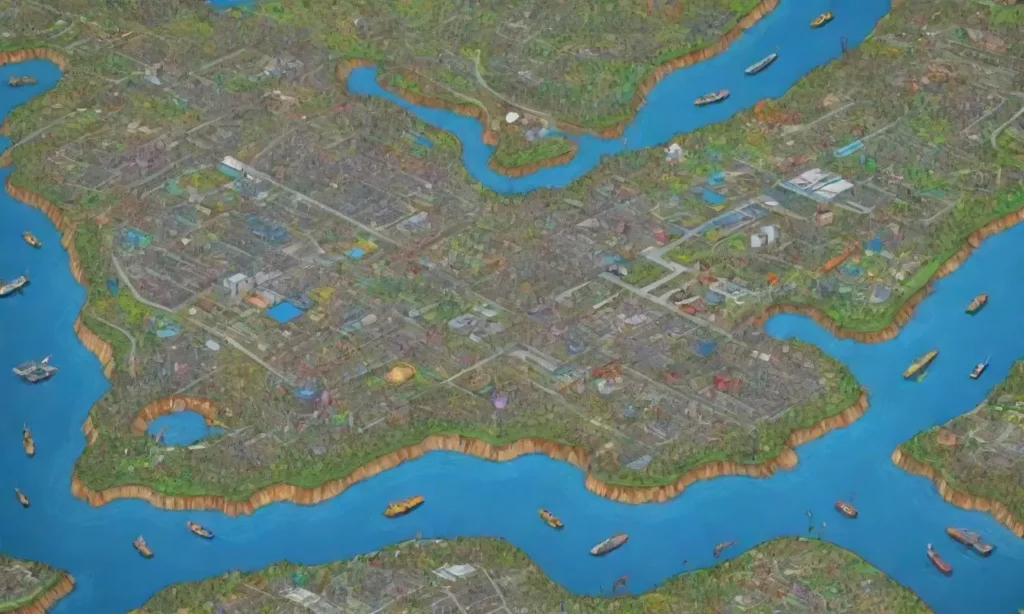
Collaborative Approaches to Satellite Imagery Classification Models

Content
Introduction
In today's rapidly evolving technological landscape, the realm of satellite imagery has emerged as a crucial resource for multiple fields, including environmental science, agriculture, urban planning, and even disaster management. The vast amount of data acquired from different satellites provides a rich source of information that can help us monitor and analyze changes in our planet over time. However, the classification of this intricate and diverse imagery presents several challenges—ranging from the sheer volume of data to the complexities involved in interpreting different features accurately.
This article aims to delve into the importance of collaborative approaches in developing satellite imagery classification models. In particular, it will discuss how collaboration among researchers, institutions, and technologies facilitates a more refined and accurate classification process. We will explore various methodologies that have been adopted in recent years, including ensemble learning, transfer learning, and community-based participatory approaches, all of which foster collaboration while allowing for a deeper understanding of the diverse applications for satellite imagery.
The Importance of Collaboration
The advancement of satellite imagery classification is not an isolated endeavor; it requires the collective expertise, tools, and datasets from a wide array of disciplines. As satellite data becomes increasingly available due to enhanced satellite technologies, the need to accurately classify and interpret these images requires multifaceted collaboration. The field has evolved from conventional, individual efforts carried out by researchers within isolated frameworks to a more integrated and community-backed model that promotes shared knowledge and resources.
One of the pivotal aspects of collaboration in this domain is interdisciplinary cooperation. For instance, combining geographical information systems (GIS) experts, environmental scientists, and computer scientists allows for the development of robust algorithms that address diverse aspects of satellite imagery classification. The unique perspectives and methods that each discipline brings can lead to enhanced interpretative models that are more effective than those developed solely within a single discipline. By pooling resources, collaborators can apply sophisticated models to larger datasets, leading to more reliable results in identifying land use patterns, ecosystem health, and changes due to various anthropogenic factors.
Deep Learning for Predictive Analysis in Satellite Imagery StudiesMoreover, collaboration opens avenues for data sharing, which often involves greater datasets than a single entity can manage. When different organizations share satellite imagery datasets, it creates a comprehensive repository that can be utilized for training machine learning models more effectively. Such models can improve feature extraction due to richer context and diverse perspectives obtained through community input. Furthermore, collaboration among multiple satellite operators can yield a holistic view of the environmental changes occurring over a wide geographical area, enhancing the accuracy of the classification models.
Methodologies for Collaborative Approaches
Ensemble Learning Techniques
One prominent methodology that has arisen in collaborative satellite imagery classification is ensemble learning. This approach combines multiple machine learning models to improve classification accuracy and robustness. Instead of relying on a single model, ensemble learning integrates predictions from various models, often resulting in a more reliable outcome. Different collaborators can focus on training distinct models based on subsets of the data or using varied algorithms, providing a range of perspectives for model training.
For instance, in a collaborative project, one research team may employ convolutional neural networks (CNNs) to analyze high-resolution images, while another team utilizes random forest algorithms to classify land cover types based on spectral data. By combining the insights gained from different teams, the final classification model can leverage the strengths of each component model, leading to improved accuracy in detecting changes such as urbanization or deforestation. Moreover, ensemble methods can help mitigate the impact of overfitting, a common issue in machine learning, particularly in complex datasets.
Another advantage of ensemble learning in collaborative settings is the opportunity for peer validation. Teams within the collaboration can scrutinize the outputs generated by various models, compare results, and identify discrepancies or areas for improvement. This iterative process facilitates continuous learning and model refinement, ultimately enhancing the quality of the classifications produced.
Forecasting Urban Growth Through Satellite Imagery and ML MethodsTransfer Learning for Enhanced Efficiency
Another collaborative approach gaining traction is transfer learning, where a model trained on one task can be repurposed for a related task with less data and computational resources. Such an approach is particularly beneficial in satellite imagery classification due to the often scarce labeled datasets available for certain types of imagery or geographical regions. Organizations can work together to share pre-trained models that have been fine-tuned on comprehensive datasets, thereby minimizing the need for each individual entity to compile extensive datasets independently.
Collaborations often arise when multiple parties encounter similar classification challenges but lack sufficient local data. By utilizing a pre-trained model developed through an extensive collaborative effort, organizations can apply established methodologies adapted to their unique needs. For example, a team focused on agricultural monitoring may use a model trained on urban imagery to classify crop types, employing transfer learning to adapt to the specifics of their agricultural context.
Moreover, transfer learning promotes resource efficiency in terms of time and computational power. It can accelerate the model development process significantly, allowing partners to focus on other intricate elements such as algorithm refinement and deployment strategies. As a result, more teams can engage in real-time analysis and rapid decision-making regarding environmental monitoring, disaster response, or agricultural assessments.
Community-Based Participatory Approaches
In addition to technological methodologies, community-based participatory approaches are increasingly being recognized as vital collaborative strategies for satellite imagery classification. These methods involve local communities in the design and implementation of classification projects, enabling stakeholders to play an active role in data collection, analysis, and validation. Local knowledge enhances the overall understanding of the landscape and characteristics of the regions being studied.
Engaging local communities offers several advantages. Firstly, it provides culturally relevant insights, ensuring that classifications resonate with local contextual understandings. Many complexities in satellite imagery are rooted in local socio-economic and environmental realities, which may not be effectively captured if experts act independently without engaging local stakeholders. By incorporating local knowledge, researchers can capture unique land uses, traditional farming practices, and changes in land cover more accurately.
Additionally, community involvement fosters a sense of ownership and empowerment among local populations. When communities participate in the satellite imagery classification process, they often become more invested in the outcomes and implications of the research. Their engagement can lead to improved compliance with land-use regulations and sustainability measures, as they are more likely to understand and support initiatives that benefit their environment.
Furthermore, community-based participatory approaches can bridge gaps in data accessibility. In many regions, satellite data may be difficult to access or interpret for non-expert stakeholders. By engaging communities actively, researchers can help train locals on utilizing satellite imagery tools, thereby expanding their capacity to monitor local changes effectively. This reciprocal knowledge exchange enriches the data interpretation process on both sides and leads to more comprehensive classifications.
Conclusion

The landscape of satellite imagery classification is multifaceted, and the challenges associated with it demand a collaborative approach that brings together various stakeholders, technologies, and methodologies. The integration of ensemble learning, transfer learning, and community-based participatory strategies underscores the importance of collaboration in developing robust models capable of handling complex imagery. Each approach adds layers of depth and reliability to the classification process and ultimately leads to comprehensive understandings of our environment.
In today's context steeped in environmental challenges such as climate change, urbanization, and habitat loss, collaborative methodologies also offer pathways to sustainable development. Through shared knowledge, collective action, and community empowerment, we can ensure that satellite imagery serves as a tool for effective environmental stewardship. Moving forward, it is essential that we continue to foster collaboration across various disciplines and communities, as this will enable us to develop innovative solutions that address the pressing issues concerning our planet's health and future.
As we strive to better interpret and classify satellite imagery, the collective wisdom and efforts of diverse stakeholders will play a crucial role. We can unlock the full potential of satellite data by creating collaborative networks that empower local communities and harness scientific advancements. Hence, we stand not just at the intersection of technology and environment, but also of community engagement and global responsibility, enriching our understanding and connection to the world around us.
If you want to read more articles similar to Collaborative Approaches to Satellite Imagery Classification Models, you can visit the Satellite Imagery Analysis category.



You Must Read